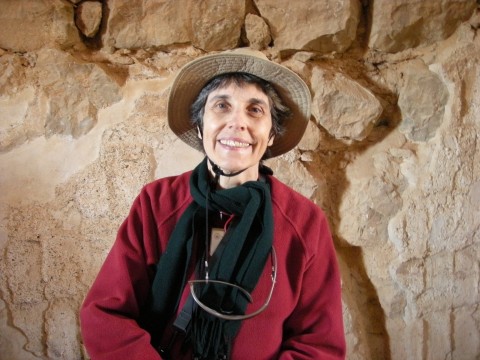
13
May
My mother’s favorite beau of mine is teasing me on Mother’s Day.
We laugh as he retells his conversation with the friendly clerk at the bank when she inquired what he might be doing for me on Mother’s Day? “She’s not my mother!” As we are unpacking bags in the tiny kitchen from our excursion to the Dupont Circle Farmer’s Market, he says with a kiss, “You could write your next essay on rebar and rhubarb.”
At his favorite cherry tomato and spinach tent, I snagged the last bundled few stalks of pink-red rhubarb. Another seller offered piles of green ribs, but knowing that the green stems under the leaves are toxic, they held no appeal. The color red, especially rhubarb red is important to me, so I steered clear of them. Nearby, Twin Springs Orchard from Orrtanna, Pennsylvania, still offered greyed wooden boxes full of over wintered green, yellow, and red apples. Although looking a little tired on the outside, they have proved dependably crisp and tasty on the inside for fine snacks and outstanding rhubarb applesauce.
As for the invisible ribs of rebar cemented in the walls and floors of our apartment building, like the fresh organic foods from the market that nourish our more stressful life in the capitol city, its presence ensures the stability, solidity, and longevity of the building. Inside the windowless kitchen, the rebar forms a Faraday cage and prevents the transmission of cellular phone signals. In the Washington, DC kitchen I cannot both cook and talk on the cell phone.
Permanent ribs of iron rebar resemble the rigid stalks of seasonal spring and early summer vegetable rhubarb. As things unseen and seen, imbedded and subsumed, inside and outside, both strengthen life, health and happiness.
On Mother’s Day when our children were small, the old beau would often give me a good book with a twist, the time to read it. This day brought a neat variation on the theme. Nurturance and gift. Mother wit and mother love. Ribs and ribbing.
03
May
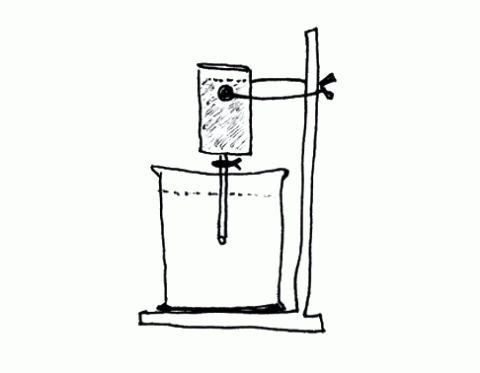
The Pulse of a Salt Oscillator, a Meditation
In describing the Rule of St. Benedict (480-540) in Seeking God, Esther de Waal describes the keystone of community and personal life as relying on balance, proportion and harmony in body, mind and spirit. She writes that the purpose of the rule is to create a favorable environment in which the balanced life may flourish.
Stability is fundamental and means more than not running away from a place or people, rather, “not running away from oneself.” Stability permits us to recognize the connection of inner and outer, to respect and order disparate elements within ourselves, our relationships, and in our physical bodies.
Benedict distilled his life experiences into clear directions.
Listen to one another, and to God. Listen with sensitivity and openness. Practice the hospitality of the open door, the open heart, and the open mind.
In 1970-71, Seelye wrote a paper for the Amateur Scientist column edited by C. L. Stong of the Scientific American.
In pondering St. Benedict’s Rule, the experiment Seelye devised to demonstrate the salt oscillator entered my mind as a metaphor, to illustrate the dynamic in living with balance, proportion, and harmony.
Picture a clear glass beaker filled with fresh water placed on the base of a ring stand. Clamped to the stand above the beaker is another container (the home model was a frozen juice can) fitted with a small-bore tube at the bottom and extending halfway into the water in the beaker below. Pinch the tube closed and fill the upper container with a colored salt solution, for example, soy sauce. Release the pincher on the tube and observe the flow downward of the heavier visible fluid into the clear fresh water. Within less than a minute the downward flow will pause, then reverse direction. The oscillation will repeat until both upper and lower fluids are in balance for saltiness.
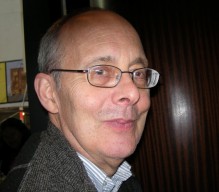
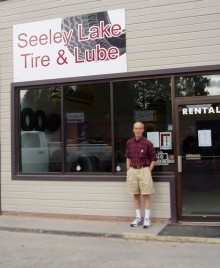
Seelye Martin in San Francisco, 12/07 and at Seeley Lake, Montana, 9/05
20
Apr

Fellow pilgrim Reverend Terry Burke snapped the picture of me in the Roman bath in Herod’s fortress palace at Masada, Israel on February 4, 2008. Not far north lie the ruins of the Essene community at Qumran, our next stop. Moses would have seen the region from Mt. Nebo across the Dead Sea, the promised land he was not to enter.
During my first visit to Jericho with my parents in 1954, the Dead Sea was markedly broader, the scrolls recently discovered and in the process of being dispersed for analysis. That day it rained for the first time in forty years! The cool temperature cancelled our swim. However, Charles collected a chunk of salt to ship home and taught me the story of Lot’s wife. Humid summers in Lexington vaporized the salt over the next two decades, raising questions for me about what lasts, what hardness means, and the power of water over rock.
During the pilgrimage with St. George’s, I appreciated that the college made the arrangements and marveled at the many changes in the fifty-four years between my journeys. Preparing for the rigorous daily schedules, I felt torn like Bethany sisters Mary and Martha between Girl Scout preparedness and Lot’s wife’s looking-back salt pillar. Chiefly, I meditated on water, life-giving, scarce, purifying, essential.
Snow fell on Jerusalem during both my wintertime visits. In 2008, exposure to spouse Seelye’s work on satellite images of earth and icy regions enhanced my understanding of the tectonic plates, of Mt. Hermon and the sources of the Jordan River at the head of the Rift Valley. I thrilled to walk along King David Street, the divide between the Mediterranean watershed to the west and the Jordan River valley to the east. I better understood the rush of water and debris through wadis, gulches, the dangers of erosion, the grace of snow to percolate soil and replenish underground springs.
During the storm, snow blanketed the riven city, muffling sounds as everyone sought shelter. The day after, the city sparkled in powdery crystalline beauty.
Along Salah Eddin Street young men ebulliently rolled snow folk sentinels on the sidewalks. Though the worn ancient stones were slippery, everyone seemed to enjoy the pause from routine, the clear atmosphere and white ground.
Inevitably, the snow melted. Traffic, business, tensions resumed. More aware of the land underfoot, I observed the occupancy of it. Stony land, stony hearts, stewarding water. Water seeping, running, dripping for irrigation. Water, in plastic bottles, in springs, in baptismal fonts. In the rainy season and along the steadily evaporating Dead Sea, I pondered on the physical world, the spiritual world in my sightlines. What can one person offer, influence, or aid?
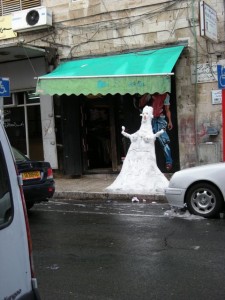
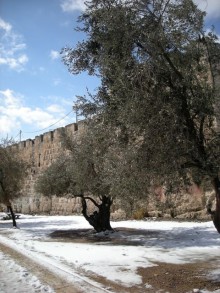
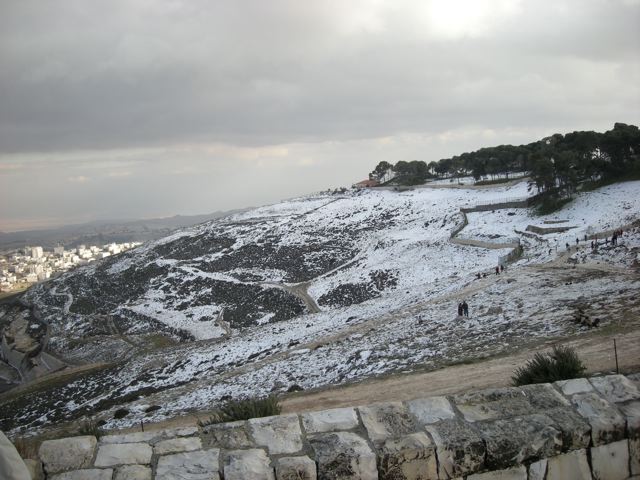
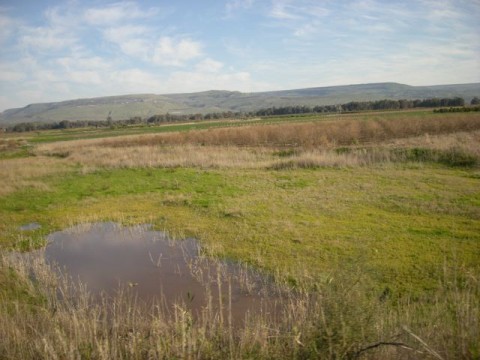
08
Mar
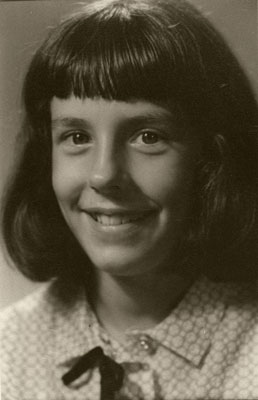
The Julie of 10 years old in Rehovot, Israel, greets you with the same smile and eyes as the Julie of today.
When Mr. Schleissner tripped the shutter, I was already immersed in the atomic age. It was the height of Senator Joseph McCarthy’s attacks. Her wartime work and naming element 61 Promethium unrecognized, my mother, Grace Mary, by drinking beer, PM whisky, and Manhattans, had begun raising her tolerance for alcohol that would cost her life too soon eleven years ahead. Israel Dostrovsky had invited 30 scientists to teach at the Weizmann Institute and my father, Charles Coryell, had accepted. His wife, Daphne O. Dostrovsky was about to paint my portrait.
In December 1953, we traveled by sister steamships, trains, and airplanes from Boston to Israel. Seeing historic Gibraltar, Grenada and Seville, the poverty, religious prejudice, and political oppression of southern Spain stung my conscience. Writing furiously my first essays titled SPAIN AND HER TRAGIC LIFE on the plane ride from Cairo to Amman, Jordan, Grace Mary insisted I look out the window to see the Suez Canal. In Jerusalem she invited me to be baptized and we celebrated my Christmas Eve birthday in Bethlehem. Crossing the Mandelbaum Gate into the new state of Israel introduced me to the uneasy peace and fresh relics of recent fighting.
War, peace, travel, words, justice, gardens, art. Games, stories, reading aloud. Studying dictionaries to understand roots, suffixes, prefixes, how chemists name compounds. Anxieties, cooking, cleaning, tending water. Conversations, the worlds of faith and reason. Parasites, addictions, affections, sex and senses, music, dance and fun. Questions. Some answers. Allusions, illusions, delusions. Christian mystics name four levels to spiritual quest: reading, prayer, meditation, contemplation. Devout Jews cite four levels of meaning to reading Torah. The first syllable of each level, p- r-d-s-, forms an acronym for paradise. To question, study, pray, seek union with the divine creates heaven on earth.
I invite you into my memory museum.
